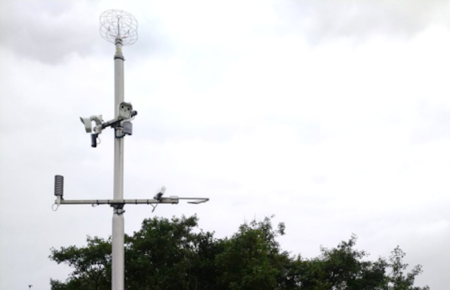According to a new report from the Organization for Economic Co-operation and Development’s (OECD) International Transport Forum (ITF), extreme weather conditions due to climate change pose a new threat to ageing transportation infrastructure.
The ITF report Adapting Transport to Climate Change and Extreme Weather reflects on the findings of a number of research projects that can now be applied worldwide. The study suggests that governments and their agencies need to be better prepared for extreme weather events to minimize or avoid dangerous situations. In the report, experts from several countries have broadly appraised the costs of disruption to transport systems and the most effective ways of reducing such costs.
The report also included a list of long and short-term strategic measures. The results combine earlier research findings with experiences from the European Union (EU), the USA, Canada, Japan and Australia.
For example, according to the Extreme Weather Impacts on European Networks of Transport (EWENT) project coordinated by the VTT Technical Research Centre of Finland, transport system disruptions alone could cost national economies in the EU up to 0.15% of GDP. Such disruptions include traffic accidents, infrastructure damage, and delays in travel and transport.
The freshly published report lists nine strategic measures which it proposes for inclusion in the transport and infrastructure policies of OECD member countries:
1. Act now;
2. Invest in maintenance;
3. Prepare for more frequent extreme weather events;
4. Draw up continuity plans for sudden events;
5. Assess the vulnerability of transport systems;
6. Focus on the systems’ resilience, not just better infrastructure;
7. Re-evaluate redundant transport infrastructure, that can provide valuable alternative routes if main routes fail;
8. Extend your assessment beyond traditional cost-benefit analyses;
9. Develop new investment appraisal methods that take better account of uncertainties, risks and a possible future in which extreme events become more frequent.
“Each of these recommendations is very serious and they should be taken into account in managing the entire transport system lifecycle; they address planning, construction, appraisal, maintenance and use. Experts need this information when improving the resilience and durability of different parts of the transport system. Citizens will benefit from a transport system that continues to serve the public during extreme weather conditions and situations,” emphasized the VTT’s principal scientist, Pekka Leviäkangas.
“Many impacts of climate change and extreme weather events emerge only after a long delay, so this is not just about sudden phenomena such as torrential rain or snow storms. We need to improve resilience in the long term as well, with an eye on the cost impacts on future generations.”
The report notes that a new approach to risk management will also provide new business opportunities to companies involved in maintenance, diagnostics technologies, in the strategic design of the transport system and infrastructure, and lifecycle management.




